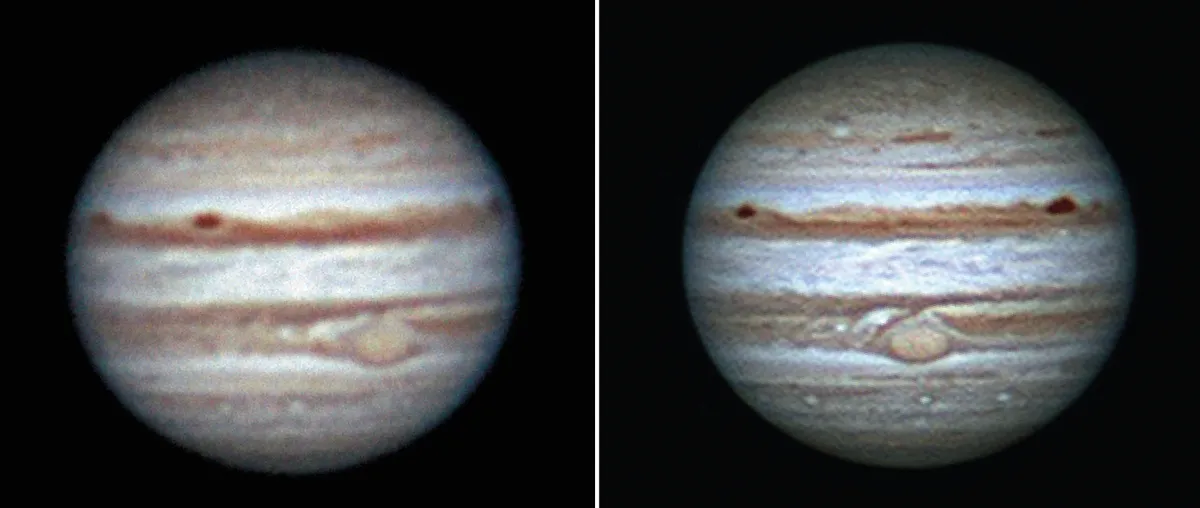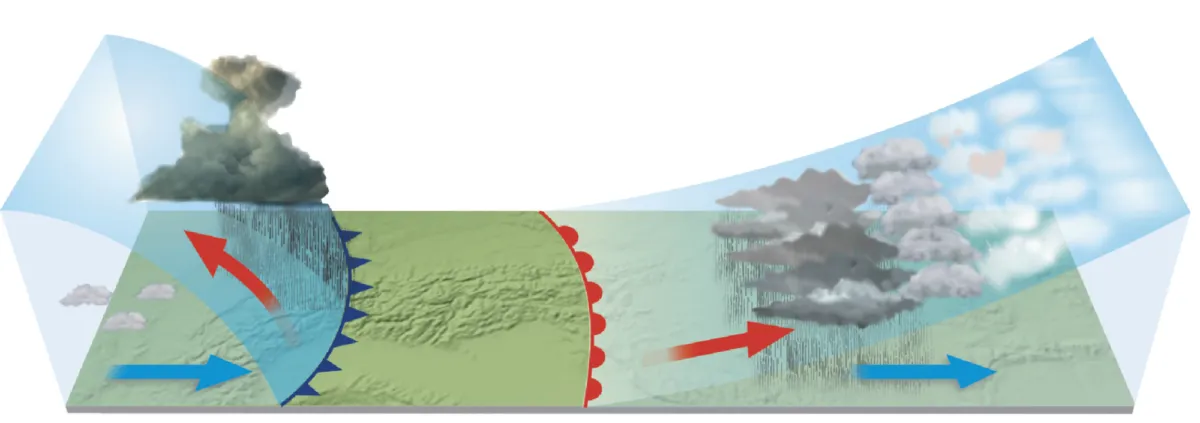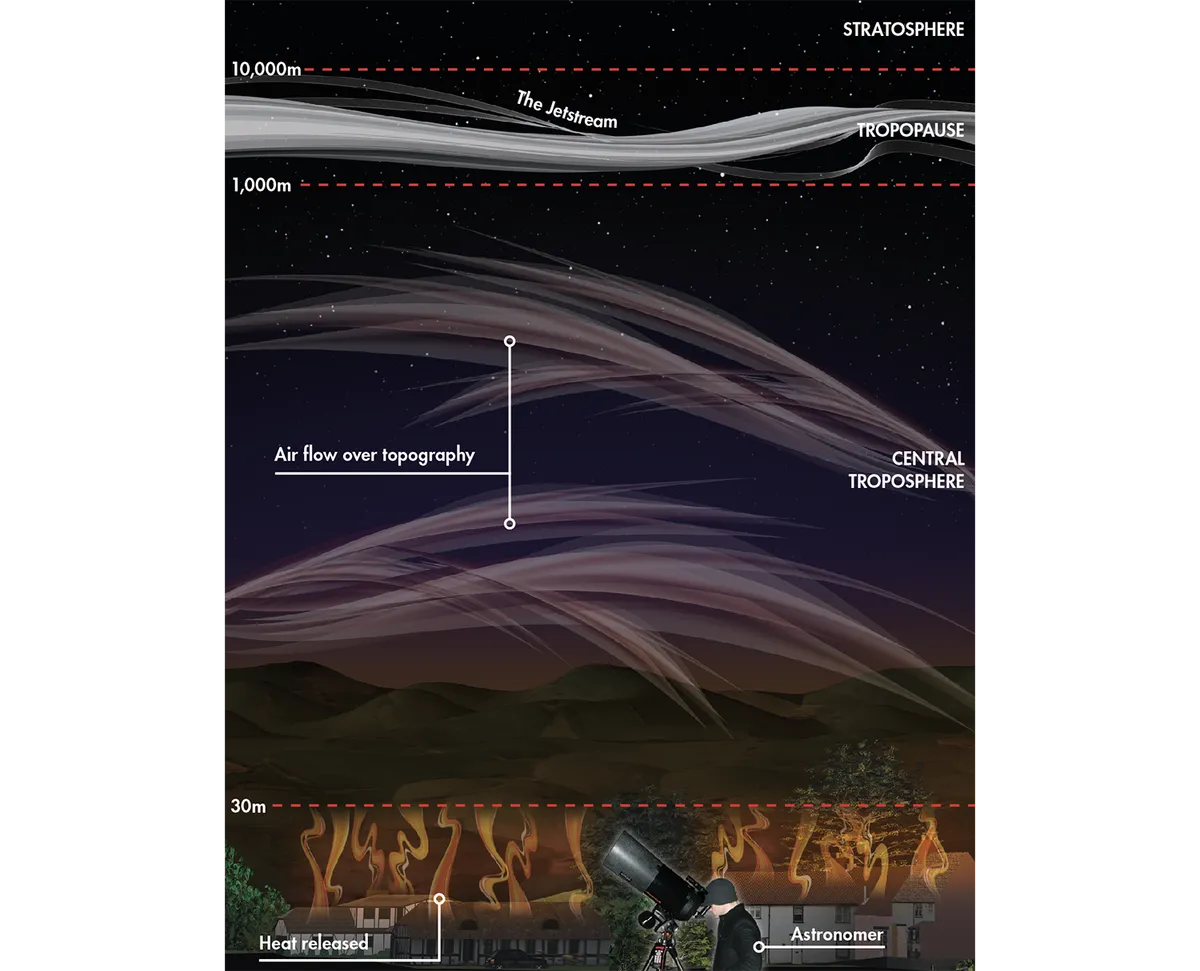Seeing in astronomy is how much celestial objects appear to flicker due to changes in the refractive index of Earth’s atmosphere.
For an astronomer using a telescope, poor seeing results in loss of detail, particularly when observing the Moon and planets.
More practical astronomy

Close-up views of these bright objects show them shimmering and pulsating quite alarmingly.
An astronomy image of Jupiter taken under good seeing, for example, clearly shows the planet’s numerous bands and the famous Great Red Spot.
However, the shimmering caused by poor seeing will blur these features, making them rather indistinct.

Likewise, craters, rilles and wrinkle edges on the Moon become considerably less crisp when Earth’s atmosphere is turbulent.
Deep-sky objects are not as badly affected as those within our Solar System as they are generally much dimmer.
The exception here are close binary stars, where poor seeing can make it much more difficult to separate the individual components.
Imaging the Moon and planets with a high frame rate CCD camera and ‘stacking’ just the best images – those captured during brief periods of good seeing – can remove some of the problem, but there is no substitute for good conditions.

Seeing causes and solutions
Poor seeing can occur on nights when sky conditions appear perfect for astronomy in all other respects.
Seeing is dictated by the steadiness of the atmosphere. The less steady it is, the worse the seeing becomes.
There are three regions of atmospheric disturbance that can affect your view of the night sky, but there’s one much closer to home we need to deal with first – the air surrounding your telescope.
The column of air within a telescope generates a miniature-scale atmospheric disturbance in the form of tube currents, as the tube tries to reach a temperature equilibrium with the air outside.
Allow your telescope to cool down to the ambient temperature of the surrounding air before you start observing or imaging through it.

The first real atmospheric region is that rising to around 30m off the ground.
Disturbances here are caused by the ground itself and nearby buildings releasing the heat they have absorbed during the day, as they too start to reach thermal equilibrium with the cooling night-time air.
The convection currents generated within the optical tube and in the nearby air change the refractive index (a measure of the amount that light is slowed down as it passes through a particular substance) of the atmosphere, causing the stars to shimmer.
This shimmering of starlight is something you can capture in a photograph showing the changing colours of a star.

The second significant layer is the central troposphere, which stretches from a few tens of metres above the ground to a 1,000m or so.
Turbulence here is caused by the effects of the topography upwind of your observing site and includes nearby populated areas, hills and other obstacles that disturb the airflow.
The final region is known as the tropopause, the area of transition between the troposphere and the stratosphere, and it is here that the jet streams can be found.
These fast-moving streams of air will blur the finest detail in celestial objects if they coincide with the region of sky you are observing.
But poor seeing does not have to be the end of an observing session.
There are plenty of wonderful sights in the night sky that are not affected by our atmosphere
These include tracing the paths of the constellations, watching the Galilean moons as they circle Jupiter, not to mention events such as eclipses, conjunctions and meteor showers.
The Universe is, among other things, a source of huge variety.

How to predict good seeing
Predicting good or bad seeing for astronomy is not an exact science, rather like predicting the weather.
However, the passage of a cold front, replacing previously warmer air with colder air, often causes areas of local convection and turbulent skies giving warning of poor seeing.
There is also a strong correlation between good seeing and low wind speeds.
Keeping an eye on weather conditions, including those that have recently occurred and then obtaining the most accurate weather predictions you can find helps determine likely seeing conditions in the near future.
Luckily, you don’t have to step outside to determine if the seeing conditions are favourable, as there are some excellent online resources to help you.
For example, Meteoblue is an excellent weather forecasting site with localised seeing predictions for subscribers and subscription is free.
For an animated jet stream map, Netweather should be you next port of call, and you can cross-reference its data against that provided by Unisys Weather.
Finally, for a specific astronomy-related resource, Weatherweb offers a range of weather maps, charts and forecasts tailored for your location.
No matter which resource you use, remember that data is not guaranteed. It's a best guess and can’t take into consideration your immediate topography.
This article originally appeared in the September 2014 issue of BBC Sky at Night Magazine.
